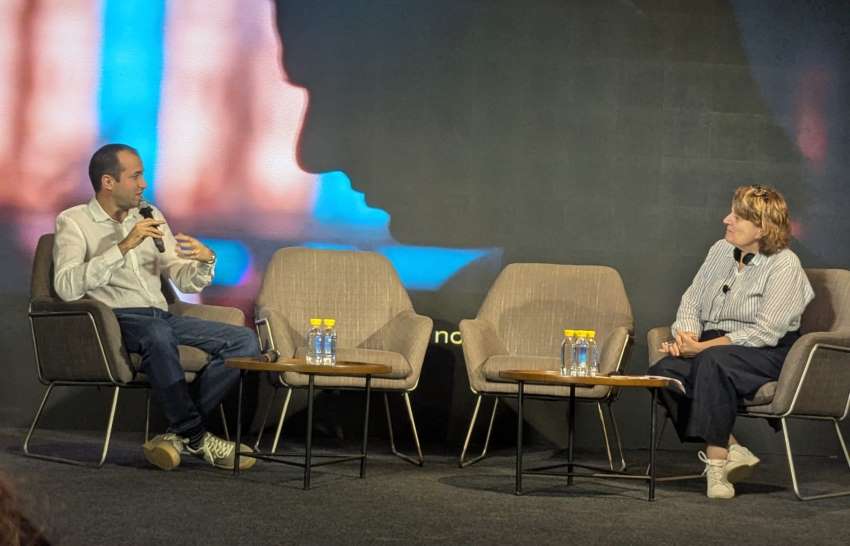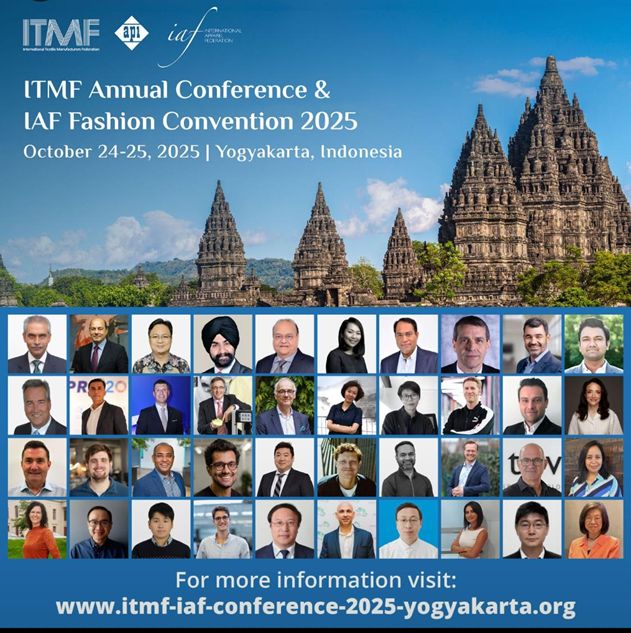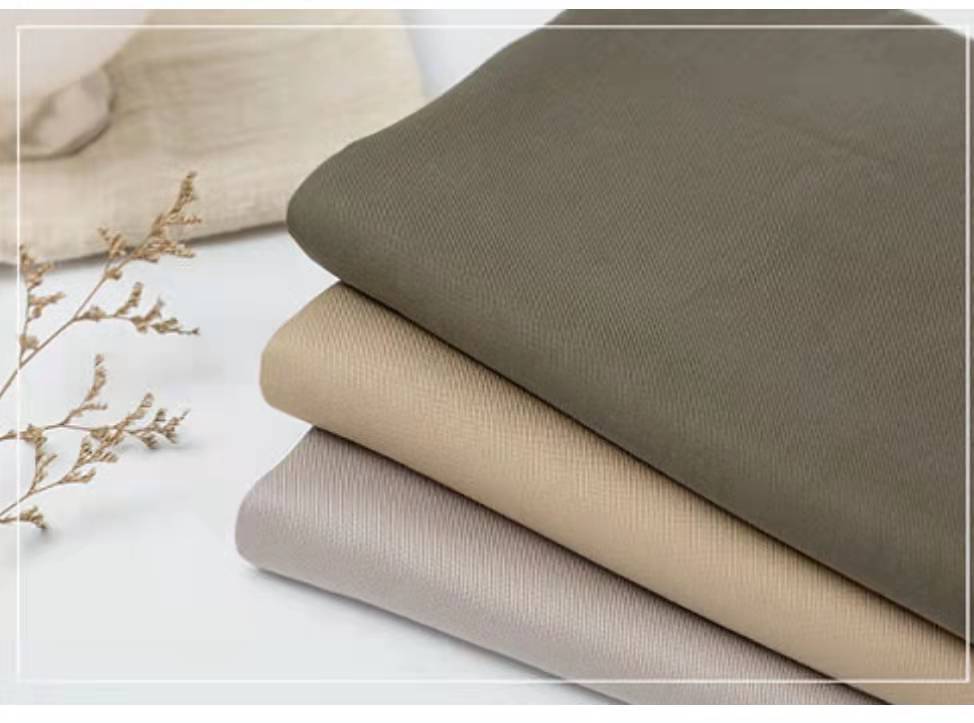FW
Intexpo Bangladesh 2016 is being held on May 30 and 31. This is an Indian textile exhibition that aims at tapping the growing business potential especially that of manmade fibers. The expo aims to provide unique opportunities to the textile and garment business fraternity of Bangladesh to see the quality and range of Indian fabrics and yarns. It also enables them to establish personal contacts for mutually beneficial business tie-ups, including the possibility of having long term venture alliances with their Indian counterparts.
A total of 30 leading Indian manufacturing and exporting companies are displaying their latest range of textile items such as suitings, shirtings, dress materials, embroidered fabrics, high fashion fabrics, furnishings, home textiles, made-ups like scarves, stoles, shawls, laces, synthetic and blended yarns, fibers and garments in the expo. Labor cost, market access to the EU and the US are among the advantages of Bangladesh which Indian exporters can leverage.
The expo enables Indian exporters to meet prospective buyers or agents to generate business enquiries, help exporters to this market to further expand their contacts and give opportunities to new exporters to establish trade contacts with prospective customers or buyers.
India exported manmade textile fibers worth$134.05 million in the 2010-11 fiscal.
Exports of 100 per cent man-made fiber yarns from India were up 13.8 per cent in April 2016 as compared to the same month last year. Polyester yarn exports were up 25.1 per cent in value while viscose yarn exports value were up 29.7 per cent during the month. Acrylic yarn exports saw a drastic plunge of 36.2 per cent in April.
Polyester spun yarns were exported to 42 countries from India in April with total volumes at of 3.43 million kg, of which 16.2 per cent was shipped by Turkey alone. Nine new destinations were found for polyester yarn this April, of which Syria, Mexico, Togo and Tunisia were the major ones.
Nine new destinations were found for polyester yarn this April, of which Syria, Mexico, Togo and Tunisia were the major ones. Egypt, Morocco and Philippines were the fastest growing markets for polyester yarns while nine countries did not import any polyester yarns during the month.
China, Sri Lanka, Bangladesh and USA were the fastest growing markets for viscose yarns while Egypt, Bangladesh, Morocco, Brazil and Canada were the new major markets. United Kingdom, South Africa and Peru were the major ones among the six countries that did not import any viscose yarns during the month.
Nandan Denim has reported a net profit of Rs 63.32 crores for the FY 2015-16 as against Rs 51.43 crores in FY 2014-15, a rise of 23 per cent. Net sales for FY 2015-16 at Rs 1,156.72 crores were higher by five percent. over the previous fiscal’s net sales. The company reported a healthy EBITDA and PAT margin in FY 16 at 16.9 per cent and 5.5 per cent respectively. Basic EPS for FY 16 stood at Rs 13.90. Meanwhile, Nandan Denim is poised to be Asia’s largest denim fabric manufacturer.
For the quarter ended March 2016, the company reported a net profit of Rs 16.57 crores against a net profit of Rs 15.37 crores in the corresponding period last year, a growth of eight per cent. Net sales in the quarter at Rs 294.31 crores were higher by six per cent compared to Rs 278.31 crores in the same period in the previous fiscal. For the quarter, EBITDA margin stood at 16.5 per cent and PAT margin at 5.6 per cent.
The company had made a preferential placement of 25,00,000 convertible warrants at a conversion price of Rs 200 each. The entire money of Rs 50 crores has been received and equivalent numbers of equity shares have been allotted to the investor.
Currently Nandan Denim has an installed capacity of around 99 million meters of denim and expects to take it to around 110 million meters. Looking to the average utilisation of around 80 to 85 per cent the company expects to be able to add another eight per cent to it. So a five per cent volume growth looks very much on the cards in the financial year 2017. Going forward Nandan Denim is going to work seriously on exports front and is expecting a decent hike in export volumes and topline as well. The company is working to enhance the value addition in the manufacturing process. So it expects a decent hike coming through the price part as well.
According to a survey by business i provider Ethical Corporation's 2,000 plus business executives has found that only half of them believe that sustainability is driving revenue. The report ‘State of Responsible Business 2016’ by the UK-based Ethical Corporation found 49 per cent corporate respondents either ‘don't know’ or ‘don't believe’ that sustainability is driving revenue for their business.
Apparel, FMCG and manufacturing firms are amongst the most likely to acknowledge the benefit of sustainability, and those from financial and professional services sectors were less likely to agree, the report says. The latest report, builds upon the inaugural report published last year, 52 per cent apparel, FMCG and manufacturing respondents said that they pay for external assistance with their sustainability strategy. Seventy one per cent of corporate/brand respondents said that their CEO is convinced of the value of sustainability.
Ethical Corporation's report found that there's been a 9 per cent increase globally in those feeling that sustainability is integrated tightly enough into broader business strategies.
A campaigner for higher wages in Asia has urged global clothing brands to take responsibility for the millions of workers in the region who are poorly paid by suppliers and ignored by governments. Incidentally, Asia accounts for more than 60 per cent of the world's garment production, with the industry employing more than 15 million people directly, most of them women.
According to Anannya Bhattacharjee, Coordinator with the Asia Floor Wage Alliance (AFWA), a supply chain lobby group, workers deserve a living wage because the minimum wage set by most Asian countries is inadequate to keep them out of poverty. Meanwhile, higher wages in China, the world's largest clothing exporter, are driving brands worldwide to seek cheaper alternatives in countries such as Bangladesh, India, Pakistan and Sri Lanka. Suppliers in these countries are under enormous pressure to reduce costs and produce garments as quickly as possible.
Wages in the garment industry are ‘structurally failing’ to meet workers' basic needs, leading to excessive overtime, ill health and workers being forced to live apart from their families, according to the Clean Clothes Campaign, which is a member of AFWA.
At the International Labor Conference (ILC), Clean Clothes Campaign will call upon the representatives of governments, employers’ and workers’ organizations from 187 member states to establish institutional and enforcement frameworks that enable effective remedy after disasters and prevention of disasters in global supply chains. For the first time in the long history of the ILC, global supply chain issues are a main focus of the conference and follow the work of the Committee on Decent Work in Global Supply Chains with heightened interest.
Clean Clothes Campaign is represented at the conference by a delegation of trade unionists and labor activists from Europe and Asia. The delegation will use its presence at the conference to emphasize the need for an institutional framework for remedy and prevention that can be scaled up to an enforceable solution. On the opening day, Clean Clothes Campaign will address these concerns in a short plenary speech.
At the ILC, the Clean Clothes Campaign will reiterate that it is demonstrably not sufficient to just bring supply chain actors together in a dialogue and rely on their collective ability to take action. The campaign knocks on the door of the International Labor Organization to become involved in overcoming the weaknesses of non-binding initiatives and to enhance collaboration and transparency among the industry partners.
The Bangladeshi apparel makers expected that the upcoming FY 2016-17 Budget would be investment-friendly and people-oriented that would help create employment for all levels of workforce, both skilled and unskilled. According to them about 2 million jobseekers are coming to the market every year. Out of that, only six lakh are getting jobs, though CPD research claimed seven lakh are being provided with jobs each year.
The country’s RMG industry has now got a new journey following the remediation of the factory buildings as per the recommendations of the Accord on Fire and Building Safety and the Alliance for Bangladesh Workers Safety – the two platforms of North American and European retailers and brands. The government also conducted the same task in bringing improvement at the work places.
According to RMG leaders, the remediation process is going on at factories, and they need huge investment to be compliant. Each factory requires up to Tk 1 crore to Tk 5 crore as additional investment for remediation. At the same time, the apparel makers are investing in setting up green factories, and so far 29 have been certified as green factories, while 130 are registered with USGBC for establishing green factories, observed Md Siddiqur Rahman, President of the Bangladesh Garment Manufacturers and Exporters Association (BGMEA).
The BGMEA president said that a total of 618 RMG units have been closed, while another 319 are at the edge of closure for losing competitiveness and other challenges, talking on present condition of the apparel sector.
"China’s underwear market was worth RMB167.2 billion (about $25.5 billion) in 2015, up from RMB101.6 billion ($15.5 billion) in 2010, an increase of 65 per cent, according to Mintel. For women’s lingerie (defined as women’s underwear, shape wear and nightwear), the boom was even bigger: sales almost doubled from RMB59 billion ($9 billion) to RMB117.6 billion ($17.9 billion) over the same period, at a CAGR of 14.8 per cent. As a result, international lingerie brands are moving fast to reveal the business opportunity underneath consumers’ clothes."

Boosted by shifts in consumer behaviour, an under-penetrated and highly fragmented market; lingerie in China is proving to be a bright spot for international brands. China’s underwear market was worth RMB167.2 billion (about $25.5 billion) in 2015, up from RMB101.6 billion ($15.5 billion) in 2010, an increase of 65 per cent, according to Mintel. For women’s lingerie (defined as women’s underwear, shape wear and nightwear), the boom was even bigger: sales almost doubled from RMB59 billion ($9 billion) to RMB117.6 billion ($17.9 billion) over the same period, at a CAGR of 14.8 per cent. As a result, international lingerie brands are moving fast to reveal the business opportunity underneath consumers’ clothes.

In 2007, Italian lingerie label La Perla moved into China and now has 14 stores across Mainland China and Hong Kong. La Perla, which also sells loungewear, beachwear and men's, and presents its 'Atelier' collection of underwear-as-outerwear at Paris Couture Week, has 34 points of sale across Asia, but mainland China is leading their retail strategy in Asia, says Chiara Scaglia, chief executive officer of La Perla Asia. Last year, La Perla's sales in the region grew by 40 per cent.
Changing consumer tastes
Chinese consumers favoured visible, logo-heavy luxury goods like handbags or watches over discreet high-end items like lingerie a few years back. But maturing consumers tastes are eroding the appeal of flashy luxury products. The government’s corruption crackdown may also have worked in lingerie brands’ favour, by making it less acceptable to be seen sporting designer goods. High-end items like La Perla’s $1,400 sheer bodysuits and Agent Provocateur’s $900 lace corsets fit the bill for consumers who want to indulge in luxury goods but not overdress.
International lingerie players are relatively new to the market compared to ready-to-wear or accessories brands - a fact that is buoying sales while spending slows in other luxury categories. By virtue of being hidden from view, lingerie is also less tied to trends and less prone to brand fatigue - both of which may prove advantageous in weathering uncertain economic conditions in the Chinese market.
Analysts believe China’s lingerie opportunity is just warming up. Domestic lingerie brands like Gujin are launching higher-end lines, and as consumers trade up from mass to luxury brands, the women's lingerie market will increase in value by 55 to 60 per cent from 2015 to 2020 - outpacing the overall underwear market, which will to grow by just under 50 per cent, predicts Matthew Crabbe, Mintel’s director of research for Asia-Pacific. Chinese consumers, he says, are becoming more willing to invest not just in looking good on the surface, but also in buying higher quality, and especially imported, underwear.
Fragmented market

The fragmented nature of China’s overall underwear market - no brand has more than a 4 per cent market share, and the top five brands by market share are Chinese - also presents an opportunity to international players, including mid-market brands like Princesse Tam-Tam and Victoria’s Secret. Having tested the waters with beauty and accessories stores in China last year, Victoria’s Secret will open its first full flagship in Shanghai before the end of the year (the L Brands-owned brand has reportedly held back on adding underwear to stores, while it observes local tastes and sizing).
Meanwhile, Jorge Martin, project manager for apparel and footwear at Euromonitor International, forecasts total women’s underwear sales in China to increase by a CAGR of 7 per cent over the next five years, driven by rising disposable incomes and international brands expanding into second- and third-tier cities.
High-end brands are also moving fast. China is one of the main growth drivers globally and I believe that we still have significant potential to expand, according to Chiara Scaglia, who predicts La Perla's introduction of accessories such as bags, shoes and eyewear will be met with increased interest in the region. This year, the brand focuses on maximising the performance of its current China stores, before opening another one or two in 2017.
Agent Provocateur, whose largest market is the US, followed by Europe and Russia, plans to double its store count in China over the next three years and has begun to assess a China e-commerce launch, which Malverdi calls a ‘huge opportunity.’ (Currently, the brand does not sell online in China, either on its own website or through other online stockists).
According to him, the challenge will be moving into second-tier cities, where more localisation and marketing may be required (the brand currently does not advertise in the region). The other big challenge is after the novelty of the brand's presence on the market wears off, adds Marshal Cohen, chief industry analyst at The NPD Group, of international lingerie labels. How well the brand will sustain its position in China will be a key indication of its true strength there, he concluded.
Dependence on borrowed technology, lack of continuous and sustained R&D initiatives have kept India’s domestic textile machinery far behind. For financial year 2014-15, the production value of mainstream textile machinery, accessories, spares and consumables improved only by three per cent. The industry has since struggled to sustain momentum, and is on a flat growth path despite the continuation of capex-inducing concessional subsidy based schemes such as TUFS.
The lackluster performance after financial year 2014 was mainly due to the hit taken by the overall synthetic filament yarn industry, which accounts for 10 per cent of all textile machinery output. In addition, the synthetic and man-made fiber sector is plagued with overcapacity situations. This excess capacity situation, owing mainly to the slowdown in the demand for synthetic textiles, has impacted investments and thus take-off for textile machinery, despite availability of concessional schemes to boost capex via new projects. The scenario is not likely to change in the near future due to continued weak demand for textiles.
The only ray of hope is the successful run enjoyed by the cotton and spun yarn spinning mill machinery. This has been solely due to the capability of the spinning machinery segment to meet demand. Favorable and special textile policies have played a pivotal role in mobilising new investment in cotton or spun yarn mill projects. As a result, the domestic production of cotton or yarn spinning machinery has become the strongest link in the machinery value chain, accounting for almost 50 per cent of textile machinery production.
SPINEXPO Paris organised by independent textile specialists to presents an international top level offer in the field of fibers, yarns for knitting, circular knit and weaving (fabrics and upholstery), socks, laces, labels and technical textiles. The goal of the upcoming event is to bring together spinners and knitwear manufacturers, who invest in innovation and have become the most effective suppliers of US and EU brands to Paris.
This edition, SPINEXPO will present Autumn/Winter 2017-18 collection of trends for designers and manufacturers to look for ideas and inspirations for their next products.
The event is also introducing a selective international offer from the leading mills in spinning and knitwear manufacturing. Among the exhibitors will be a leading spinning specialist Consinee Group and a knitwear manufacturer Hong Kong Sales.
The group has been supported by the latest and the most advanced automatic equipment since 1999. Based on the joint intelligence of Chinese and international senior engineers, Consinee is dedicated to making a high quality yarn and has become an integrated group in the dyeing and spinning of woollen, worsted, semi-worsted and fancy yarns, as well as high quality fabrics and import-export business.
SPINEXPO will be held from July 6-7 at Cite de la Mode, in Paris.












